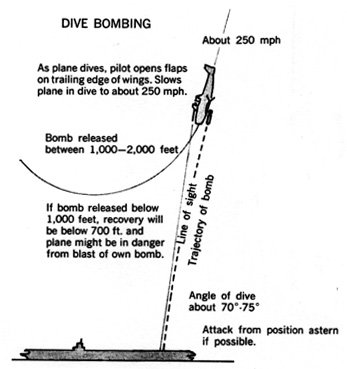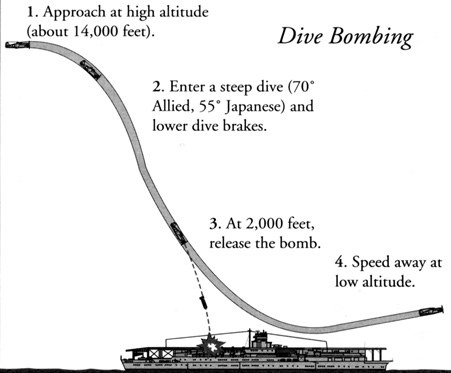Flying at an altitude as high as 12,000 feet to avoid enemy detection, a dive bomber pilot would pick out a target. Then, he would open his dive flaps so that his diving speed would be about 250 MPH, and push the stick forward so that his aircraft would plunge toward the target at a 70 to 75 degree angle. The direction of the dive determined the trajectory of the bomb so the pilot kept the nose of the dive bomber right on the target, preferably the stern of the ship.

For a harrowing 35 to 40 seconds, the aircraft would dive while anti-aircraft fire burst around it. The pilot would keep his eye on his bomb-sight telescope and move the ailerons to adjust for wind or any movement of the target. Frequently, pilots would zig-zag during the first part of the dive to make the plane a more difficult target for enemy fighters and antiaircraft fire. At around 2,000 to 1,500 feet, the pilot would release the bomb. Since a bomb takes less than three seconds to hit a target from 1,000 feet, the aircraft would be in danger of being blown up by its own bomb if it dived any lower.

The pilot would then quickly pull the nose up, subjecting himself to a large amount of centrifugal force - usually from 5 to 6 Gs. If he was lucky and anti-aircraft fire or a fighter cover didn't get him, he would then hear the unmistakable sound of his bomb exploding on the target.